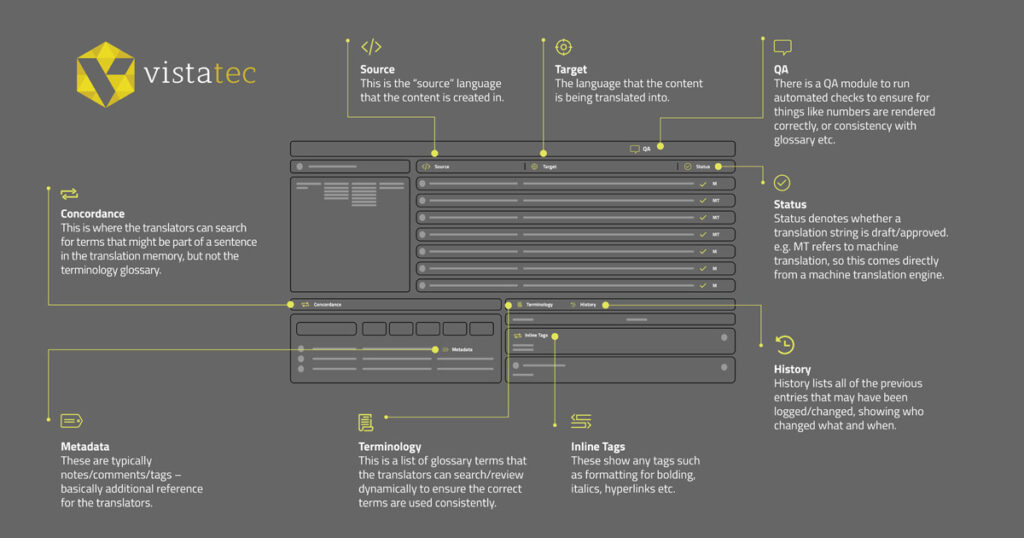How to Kick-Start Your Localization Strategy
It happened! Your CEO came to the realization that to maintain its remarkable growth, the company needs to expand internationally. The C-Suite just mandated that international customers be given the same great experience as your domestic audience. The time has come for your company to initiate and optimize a localization strategy.
But wait. Your manager just sent you an urgent message. She’s thrilled to inform you that it’s up to you to optimize the localization strategy. “It would be great if you could come up with a plan and a general idea on the cost of getting started. It’s urgent, so getting it to me by the end of the week would be wonderful. Happy Wednesday”
Congratulations?
You wipe your brow, brew a cup, and sit down. You do an online search for “how does a company get started in localization?”. You call a friend at your old company who you think did a little bit of this in the past. Eventually, you come to the realization that three critically essential things ensure your company’s localization success.
- You need vendor support to manage translation.
- You need to understand the technology used in localization and which is best for your company.
- You need to get a sense of the most efficient way (including costs) for your company to use the technology.
Finding the proper vendor support seems straightforward. You’ll base it on vendor experience in your vertical and the vendor’s reputation, philosophy, technical capability, support, quality assurance, etc. It will take a bit of time and research, but yes, you’ve got this one under control.
On to the localization technology. What is it, and how does it work? Do you need to buy it? How much does it cost? Is it something vendors can manage for you? You’re stressed. Understanding the technology to get started in localization seems unbelievably complex.
But — and sincerely — congratulations! It’s really not that complex at all. And there’s even better news. In these early days of your localization strategy plan, understanding how the technology works and your options to make use of it will save you headaches for years to come.
To figure out points 2 and 3 above, you need to understand three concepts around localization technology fully. These key concepts will guide you toward the most efficient way (including costs) for your company to make use of the technology.
Localization Technology: Three Key Concepts
What does a translator see when they’re working? Professional translators all use some form of “workbench”, which is easy to describe.
Look at your screen. Now imagine a line drawn down the middle from top to bottom. On the left side of the screen, the translator sees the source (native language) text. The text is broken down into individual sentences or parts of a sentence (“strings”). On the right side of the screen, the translator types in the translation. The right side (where translation happens) will either be blank, or it could be populated with a suggested translation. How did that suggested translation for each string get there? It got there in one or two ways: from a translation memory or by machine translation.
A translation memory is a database of previously translated strings. The more translation you do, the more translated strings a TM contains. The following example illustrates how this works.
We’d like this article to be translated into Bulgarian. It’s the first time we’ve asked, so the TM is empty – no suggested translations are available. After the project is completed, we ask the translator to translate a new article. This time – it’s likely that some phrases were the same as in the first – the translator will see some suggested translations automatically populate the right side of the screen. The translator has the option to accept or overwrite these suggestions. It’s that simple.
Large Translation Memories greatly enhance translator productivity. If a translator has 20,000 previously translated, completely trustworthy strings in the TM, they’re going to translate faster; they’ll have a lot of great suggestions. TMs also facilitate terminology and company voice consistency.
Translator Workbenches, Translation Memories, and a variety of other helpful things – configurable workflows, terminology databases, search functionality, dashboards, integration APIs, etc. – are all part of a TMS. While translators work in a TMS (the Translator Workbench), it’s critical to understand that localization Project Managers (PMs), reviewers, and terminology experts (to name a few) also work in the TMS. To prevent manual work, the technology teams can integrate the TMS with authoring systems. The TMS is the single most important tool that contributes to localization success.

We haven’t forgotten that you’ve got to get all important localization start-up cost information to your manager by Friday, so we’ll speed this along.
TMS Considerations and Onboarding Path
Now that you understand that the TMS is the cornerstone of your localization success, let’s take a step-by-step look at the best way for you to bring a TMS to your company.
Step One: TMS Onboarding Choices
Option one: Your vendor provides you access to a commercially available TMS for which it has a license (zero or minimal cost to you):
Working with such “technology agnostic” vendors is a solid option if your company is just starting out in localization and you’re not sure which TMS is best for you.
- Technology agnostic vendors are of the fundamental belief that TMSs are not “one size fits all” and that each customer has different requirements. This guarantees that they’ll be looking out for your best interest when it comes to TMS selection. They work with every TMS on the market…and will help you determine the best TMS fit for your needs.
- If and when you grow and move to multiple vendors, new vendors can more easily integrate with a non-proprietary TMS.
Option Two: Your vendor has its own proprietary TMS and will give you access to it (zero or minimal cost to you):
This “all-in-one” vendor option does come with a few critical warnings.
- Many of the all-in-ones did NOT start out as full-service vendors. They started as technology companies and shifted to services as a means to promote their technology and fund the development. When it comes to providing the services and linguistic quality you deserve, some emerging vendors are still playing catch-up. They lack the decades of customer-centered experience you would find with technology-agnostic providers.
- As mentioned, new vendors prefer to work on non-proprietary TMSs. This is a function of the ease and flexibility of integrating these systems into their workflows.
- All-in-one vendors talk about the portability of translation memories to a different TMS and how their TMS can integrate into others. While these capabilities are improving, they are far from perfect – additional time and headache will be part of the deal should you decide to switch systems later.
Option Three: Your company buys a commercially available TMS:
Under the following circumstances, buying a cloud-based or on-premise TMS might be an option.
- You have numerous home-grown systems into which you must integrate the TMS.
- You have secure content translated in-house.
- You have a sophisticated network of in-house translators, reviewers, Project Managers, and other personnel who want maximum control of the technology and workflows.
Option Four: Build your own TMS
Only a few very large companies in the world do this.
Summary
- You’re almost certain to find option “a” or “b” the most attractive. Both options have a negligible cost.
- If your company expects to expand its international/localization footprint and add additional content, the best-practice decision is clearly “a” — selecting a technology-agnostic vendor who provides a wide range of TMS options for your current AND future needs.
Step Two: Talking Points: The TMS Conversation (and beyond) with Potential Vendors
After you’ve decided which vendors will best serve your overall needs, it’s time to gather their input on your TMS options. We’ve created this simple checklist for you to guide the conversation. Feel free to include this in Friday’s report.
- List the types of content you wish to have translated and the systems in which the content resides. Show this to the potential vendors.
- Integration possibilities: The more you integrate content management and authoring systems with your TMS, the less manual work (file passing) you’ll have. Your vendor can guide you on the possibilities.
- Potential Growth: Into what languages might you expand? Will different content types be added? List the possibilities. They could possibly imply a multi-vendor solution in the future…which should influence today’s TMS choice.
In addition to providing insight into your best TMS solution, the suggested questions/conversations give you a better feel for how well you’d work with the vendors, the vendor’s overall technical sophistication, and the vendor’s desire to work in your best interest…to be a true and effective partner.
As the “wrapper” for your report, highlight your understanding of the following essential needs:
- Partnering with your potential vendors
- Thinking “digital first” for your company and your customer requirements
- Building a plan for your company’s/customers’ longer-term roadmap
About Vistatec
We have been helping some of the world’s most iconic brands to optimize their global commercial potential since 1997. Vistatec is one of the world’s leading global content solutions providers. HQ in Dublin, Ireland, with offices in Mountain View, California, USA.

